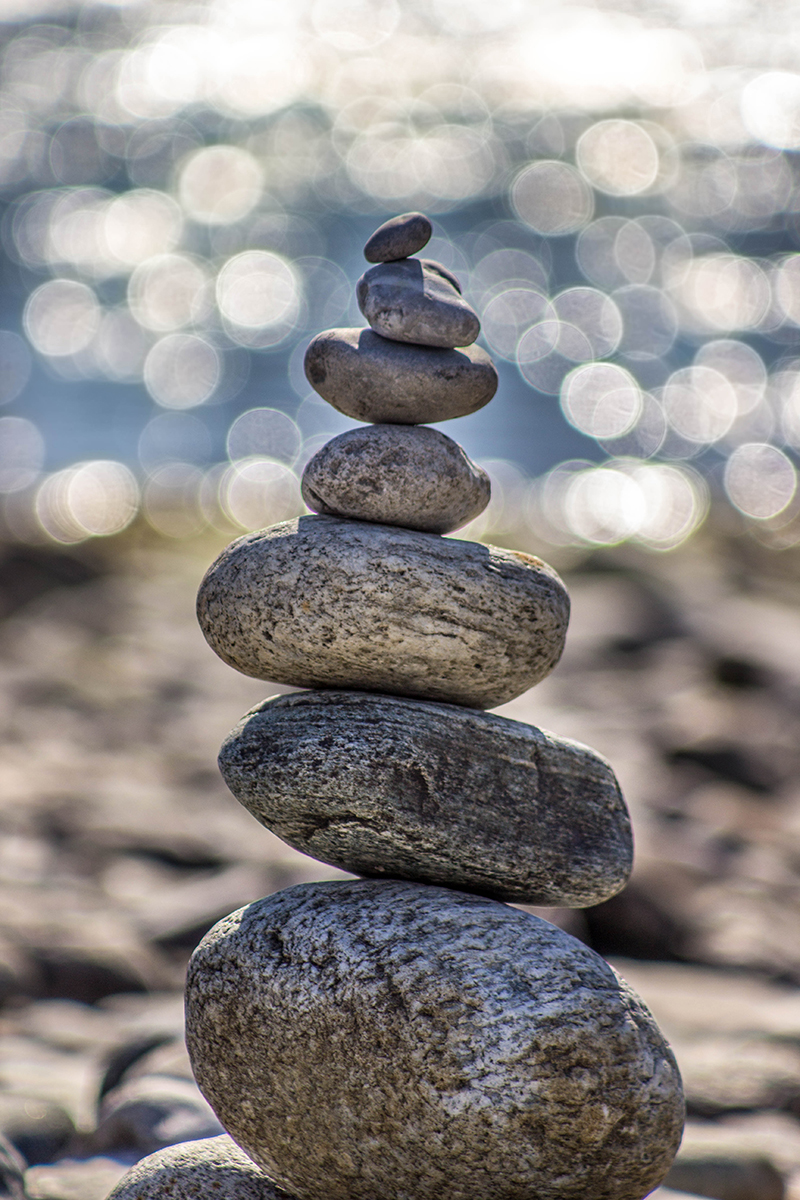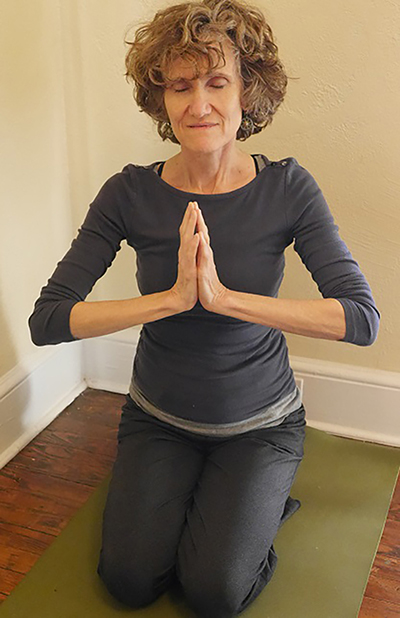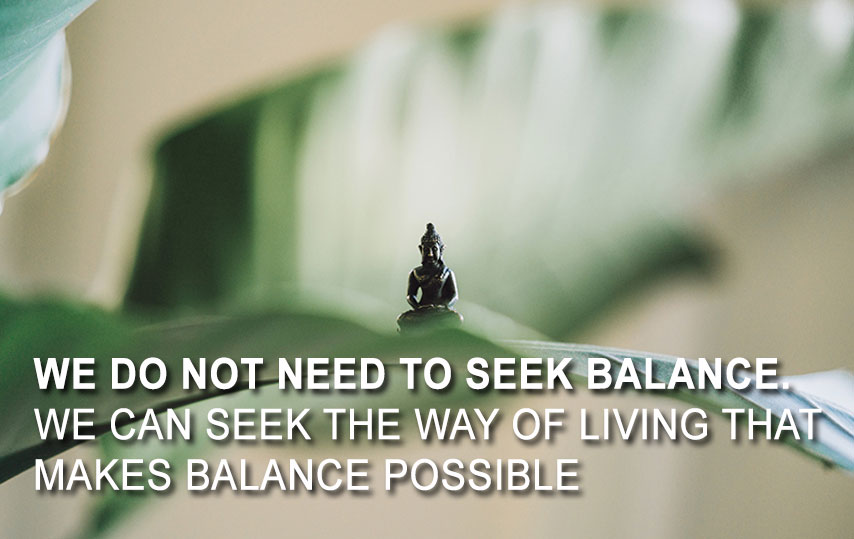When we sense safety, our bodies naturally balance themselves
You may ask: When scary things are happening in our world, how can we possibly find a sense of safety?
Understanding the new science that offers us a more nuanced picture of our nervous system functioning helps. I have been a counselor and dance therapist for 24 years, a yoga practitioner for 37 years. My interest in nervous system functioning began when I learned of the work of scientist Stephen Porges.
Over the last five years, Porges’ work has been enlightening yoga therapists and other helping professionals to the intricate nervous system dances within our animal bodies. Porges’ discoveries help us understand that there are two different dances our nervous systems do depending on whether we face life-threatening danger or have a sense of safety.
Life-Threatening Danger
When we face life-threatening danger, our bodies shoot into the physiological response called fight/ flight. The fight/flight response allows us to do superhuman feats like lift a car off a trapped person. If we did not shoot into fight-flight, we would not have the strength and we would probably talk ourselves out of trying such a feat because we would judge it an unreasonable risk.
Unfortunately, business managers and athletic coaches have discovered that pushing employees and athletes into fight/flight response gains short-term productivity. This is unfortunate because fight/flight is not sustainable. Fight/flight disconnects executive functioning in the brain and exhausts our inner resources.
Robot-like Functioning
When our internal resources become depleted and adequate resting and refueling are not possible, we can feel trapped. Perhaps we are anxious our boss will fire us or afraid our coach will shame us. When humans feel trapped, our bodies create a lizard-like state of stillness through very shallow breathing. Humans use this state to move robotically through daily routines. This robotlike functioning will hopefully keep our bosses and coaches from noticing us—hopefully, we can “slip under the radar” and they will not push us or shame us.
Shut-down is restful for lizards but not for mammals. Lizards can spend long periods of time in shut-down and wake up rested but mammals surge back into fight/flight. We wake up with panicky feelings that can make us feel like the monster Godzilla. In humans, the fight/ flight that wakes us up from robotic shut-down might look like: “Oh no, I forgot that my boss asked for that report yesterday! Where are my notes? I need coffee!”
In situations of life-threatening danger, we do NOT want balance. When facing life-threatening danger, our bodies are designed to bounce back and forth between high-intensity fight/flight and foggy dissociation until we find safety again.
A deer trapped by a tiger wants to be in a feeling-less fog or hyperdrive. These states that are designed for life-threatening danger are not meant to be balanced or sustainable. When our bosses and coaches push us toward the superhuman productivity possible with fight/flight, they are uninformed.

Humans feel the possibility of superhuman productivity with fight/ flight and are beginning to feel it is unsustainable. Humans feel that while robotic behavior might be possible for long periods, the shutdown required in order to function robotically creates dysfunction and disease.
Often when we feel overwhelmed, we seek yoga, meditation, Tai Chi, etc. We do not seek these practices because they help us find a balance but because these practices help us find a sense of safety—a feeling that options exist. In situations where we sense that we are safe—a sense that we have creative options—our bodies naturally balance themselves.
A SENSE OF SAFETY
When we sense safety, our bodies offer us natural periods of activity and rest. We have periods where we are interested in exploring our world. We have awareness of when we are tired and hungry such that we rest and refuel. After we rest and refuel, we find ourselves curious about our latest industrious exploration and return to our projects. Once a day we feel tired enough to rest for eight hours or so.
How do we find this way of living that offers natural balance?
If we take a more nuanced look at yoga poses that require balance such as the asana called tree and the asana called dancer, we will find the answer. If we seek balance when we approach a pose that requires balance, often a rigidity appears that makes balance more difficult. If we use poses that require balance to explore our lack of balance from moment to moment, there is a fluidity—a flow of energy— that makes balance more likely.
We can use gravity to engage with the earth, strengthening the muscles in our core and limbs, pushing the earth away in poses like plank, downward facing dog, cobra, and the warrior poses. As we feel our strength, we feel safe enough to be curious about the poses that challenge our balance.

Helping each other have more of a sense of safety.
• As we understand the nature of our nervous systems that are our legacy as animals, we are more capable of helping each other find a sense of safety. When we recognize in people around us the robot-like behavior of shutting down, we can recognize the fight/flight that follows and not allow our feelings to be hurt by the irritability of our co-workers.
• We can stop pushing our employees and athletes into fight/flight response. Yes, fight/flight creates short-term productivity but it exhausts our systems—our bodies, families, and communities.
As more and more of us understand nervous system functioning, we will no longer see fight/flight as healthy motivation. Instead, we will invite curiosity. And curiosity will invite balance.
Bio: Dee Wagner has worked for twenty-three years as a licensed professional counselor and board-certified dance therapist at The Link Counseling Center in Atlanta, Georgia. Her article Polyvagal Theory and Peek-a-boo appeared in Body, Movement and Dance in Psychotherapy. Articles she has written about various aspects of polyvagal theory can be found in Elephant Journal and on the International Coach Federation blog. She also co-created the book/workbook Naked Online: A DoZen Ways to Grow from Internet Dating to help daters sneak zen into the dating process. Check it out at LustierLife.com


















 Other
Other